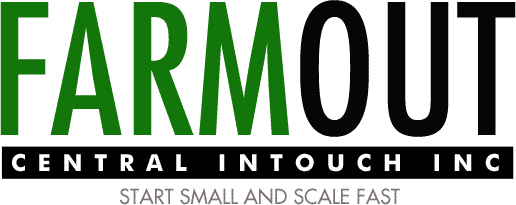Six smart CRM strategies for meeting sales quotas in a down economy
 Article courtesy of our SearchCRM.com subscription. Thanks to http://go.techtarget.com. We are sure this will be beneficial to a lot of the people who read articles here at farmout.ph but have no access to techtarget.com… so read on!
Article courtesy of our SearchCRM.com subscription. Thanks to http://go.techtarget.com. We are sure this will be beneficial to a lot of the people who read articles here at farmout.ph but have no access to techtarget.com… so read on!
By Sue Hildreth, SearchCRM.com Contributor
14 Apr 2009 | SearchCRM.com
There’s no question that when the economy tanks, the job of the salesperson gets a whole lot harder. Sales cycles get longer, it’s tougher to close, and negotiations are more difficult, leading to lower prices — and thus lower sales commissions. But that doesn’t mean you can’t sell, and sell well. It just takes more focus and a smarter use of CRM and sales force automation (SFA) tools to keep the leads coming and meet sales quotas.
“The sales cycle is extending, and it’s harder to break through. So we use CRM to help keep us on task and make sure business developers don’t drop leads,” said Patrick Cahill, senior associate at the Wellesley Hills Group, a sales and lead generation consulting company in Framingham, Mass.
The business developers at Wellesley Hills Group serve as the sales staff for various client firms that lack their own sales expertise. Wellesley Hills reps often handle sales not just for one company but for two or three. This means that keeping track of each prospect’s status and recent contact history would be very difficult without help from an automated sales application. So they use Salesforce.com to keep them on schedule with follow-up calls as well as to refresh their memories as to the history and context of prior calls to a prospect, Cahill explained.
“The business developers might have three clients they’re calling on behalf of, so there’s no way they can retain all of those calls and leads themselves,” he said. “The software records what’s going on and lets them pick it back up again when it’s time to call back, as if nothing has happened in the meantime.”
CRM and associated SFA systems can be extremely helpful in keeping sales on track, according to Cahill and other experts. Here are their suggested tactics for boosting sales with CRM.
1. Collaborate with marketing Sheryl Kingstone, director of the Yankee Group’s Enterprise Research group, said that sales teams and marketing departments often miss opportunities to work together, losing potential sales in the process. In a poor economy, sales staff need to latch onto good hooks such as a discount, a new product push, or some other marketing campaign or theme that the company is promoting, Kingstone said. Following up on marketing campaigns provides the salespeople with a more valuable and timely message for closing the sale.
“There’s long been a disconnect between sales and marketing. People are not taking advantage of a huge opportunity,” she said. “We have the technology to connect them. Marketing can do an email blast that salespeople can execute on, for instance.”
2. Mine old sales leads CRM systems can retain sales notes and prospect data for years — not just your own old notes, but those of former sales employees as well. These can be mined for old-but-still-promising leads, as well as for prior customers that might be interested in buying again. Searching by location, demographics or marketing campaign themes can net a list of new leads that is specific to your message.
“We might sort through past campaigns or opportunities that we never got to proposal with, or with former customers,” Cahill said. “In this economy, now’s the time to go back and look at past prospects. If you’ve had one conversation with a firm, it’s more likely that you’ll get to have a second conversation. So we tell people to revive those old opportunities.”
3. Leverage social networking tools for sales A blog that covers a topic of interest to customers can increase an organization’s visibility to clients and prospective clients and, if the content is good, also lend credibility.
“Now is an excellent time to implement Sales 2.0 tools to improve the collaboration between your business and your customers,” said Jim Berkowitz of CRM Mastery, Inc. “Wikis, blogs, micro-blogs [like Twitter] and more can all lead to an enhancement in customer experience and loyalty.”
Likewise, peer-to-peer networking tools such as LinkedIn.com and Octopuscity.com enable sales reps to share best practices with colleagues and tap those who have contacts at organizations that they may want to target.
“If you compile your social network with [those of] your colleagues, then you realize who knows each other and who can help you get an introduction to someone,” Kingstone said.
4. Access mobile sales data from the road It may be worthwhile to add mobile support to your CRM, she said, if you don’t already have it.
“Mobility can play a huge role in improving sales effectiveness, because the salesperson who is on the road can see the right information just at the point of interaction with the customer,” she said.
That means letting salespeople have wireless access to the same data they would have from their own desktops — contact history, last purchase, notes and recent marketing mailings to the prospect. Having that intelligence to hand, when going into a meeting, can provide the extra insight needed to close a deal.
5. Optimize sales territory assignments Territory optimization is another useful add-on tool for SFA applications. These tools help sales managers assign the most effective and equitable mix of leads and territories to the sales staff. According to Stamford, Conn.-based Gartner Inc., companies that use territory optimization tools will increase revenue by 1% to 3%.
Territory management software includes such features as mapping and visualization tools, workflow and collaborative capabilities for automating the distribution of assignments, and integration with CRM applications for lead generation and incentive compensation.
6. Analyze, automate Deal analytics is a new area of SFA that can be very useful in improving close rates, according to Gartner analyst Robert DeSisto. These tools can analyze past customer behaviors, cross-selling data, and demographics to pinpoint areas of high interest to a customer. Likewise, using the tools to examine competitive information — pricing and bundled offers, for instance — enables quicker and more effective negotiating over price. Most of these tools can be purchased as add-ons from SFA vendors, DeSisto noted.
Other such “smart” tools are also cropping up. Cahill likes one in particular: the Web-based Office AutoPilot tool from MoonRay, which supports data exchange with Salesforce.com. It is a sales process automation tool that enables sales managers to automate if-then processes for follow-up calls and mailings. For instance, if a salesperson puts notes into Salesforce.com that indicate a C-level executive was contacted and that he or she was moderately interested but did not wish to buy anything this year, the AutoPilot can be configured to use that information to trigger a monthly newsletter mailing to that executive, written as if from the sales rep, which provides updates on the product and related information.
And it can go even further. “If the lead then clicks on URLs in the email, AutoPilot could record that and assign a score to the lead. Based on that score, the software might alert the business developer that he’s showing more interest,” Cahill said. “It can help you really segment which people you should focus on.”
Cahill expects there will be more and better sales-related CRM tools coming out in the near future, especially given the increased pressure on smaller firms to maintain their sales with ever smaller staffs.
“People are concerned about committing to additional costs without knowing if they’re going to get some return quickly,” Cahill said. “There’s a lot of potential in years to come to help firms figure out which leads are the best ones to approach.”

